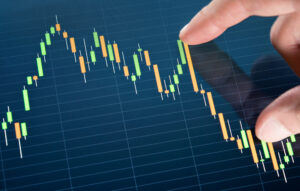If you’re reading this, you are most likely new to the world of Forex. While it can certainly seem daunting at first, once you get used to the basics it all becomes much easier to understand.
The great news is, it’s a journey which is as fascinating as it can be lucrative. So, let’s dive right in.
First thing’s first. What is the forex market?
The Forex market refers to the global foreign exchange market. This market is a $5 trillion per day market which runs 24 hours, 5 days a week; opening in Asia on Sunday evenings and closing in America on Friday nights. The market encompasses all foreign exchange transactions which take place including families exchanging money to go on holiday, all the way up to big corporations purchasing foreign property and governments loaning each other money.
How is the Forex market structured?
Unlike stock markets, which are centralised, meaning that transactions are all recorded in one place, the Forex market is decentralised; meaning that that currency transactions take place in a wide variety of different venues.
The market is essentially comprised of two categories of participant: institutional players and retail players.
Institutional players are those such as banks as and hedge funds. Banks conduct transactions on behalf of corporate customers, charging commission on the deals they carry out, while also conducting their own trades for profit. They also deal with brokers, who pass on client flow.
Retail traders refer to individual traders who are trading privately with their own money. Traders in this category can vary in size and experience from beginner traders with very small accounts to experienced, full time traders, who trade sizeable accounts.
What drives the forex market?
The forex market is driven by two things: the force of supply and demand, and fundamentals.
Supply and demand simply refer to the level of buying and selling going on globally, which affects whether the price of a currency moves higher or lower. If more people are buying than selling the currency will appreciate in value. Similarly, if more people are selling than buying, the currency will depreciate in value.
What are fundamentals?
Fundamentals refer to economic news and central bank monetary policy. Each day, economic data points are released on a per country basis giving valuable insights into the health of the respective economy, measuring points such as: inflation, GDP, unemployment and trade levels. If the data releases are positive, it will tend to drive the price of the currency higher. If the data releases are negative, it will tend to drive the price of the currency lower.
How does central bank policy affect markets?
Central bank monetary policy refers to the actions taken by the central bank to manage the economy. These actions can be classed as either tightening or loosening.
In a tightening scenario the bank will raise interest rates and withdraw monetary stimulus, this will typically lead to the currency appreciating as investors are drawn towards the higher yield on offer.
In a loosening scenario, a central bank will reduce rates and employ stimulus measures such as asset purchases in order to help boost spending in the economy. In this scenario, the currency will typically depreciate due to the lower yields on offer.
How do people trade the forex market?
When it comes to retail traders trading the market from home there are essentially two schools of thought on how best to trade.
The first is to use fundamentals. So, in this scenario a trader would track the economic performance of a country versus that of another, for example the UK against the US. If the UK economy seems to be performing better and central bank policy is tighter then a trader might buy GBPUSD (buying the pound against the dollar). Alternatively, if the UK seems to be underperforming against the US, then a trader might sell GBPUSD.
Alternatively, traders can used technicals to analyse the market and place trades. Technicals refers to the study of price charts and the way price moves and reacts. In this instance, traders will use elements such as support and resistance, trend lines, and indicators to measure the movement of price and create trade ideas.
Usually traders begin to learn to trade by opening a Demo Account. With a Demo account, traders can get direct experience of using the markets and acquire first-hand knowledge of the trading platform. Most brokers offer these services to traders so that they can develop and hone their skills before progressing to
Which is better?
The honest answer is both. Many traders find success with either method used individually. However, the majority of successful traders find that a combination of the two work best. For example, using economic data to measure the strength of a currency and then use technical analysis to find an entry point based on price action.
How to achieve success in forex?
The best advice for achieving and maintaining success in Forex is to take your time and always watch your risk. There is a wide range of educational material online that traders can use to boost their knowledge. From there, traders can use demo accounts to test their skills in the market, establishing a solid trading strategy before going live and trading real money. When trading live, traders should keep their risk levels conservative, risking no more than 1% per trade and always use a stop loss to ensure they are protected against adverse losses.
If you’d like to learn more about trading, simply visit Tickmill’s website where there is a wealth of information available.
